Lebanese Fried Kibbeh Balls are meatball-style snack with a crispy outside and an oozy savory inside of meat and spices. The crusty fried kibbeh are made with ground meat, onions and pine nuts are stuffed in a shell of herby and spiced meat-bulgur dough, fried to golden brown perfection and served warm.

Lebanese Fried Kibbeh Balls/Authentic kibbeh
Lebanese love their kibbeh and why woudn’t they: A Lebanese table full of mezze, isn’t complete without kibbeh, a dish favored across the Middle East, but particularly popular in Lebanon, where it is considered the national dish. It comes in different forms, but the most popular versions are fried, baked and raw; in today’s post we are going to be making the munch and crunch fried kibbeh balls that have gained popularity overseas; our recipe scales easily to feed a crowd, and you can make extra to freeze for later. Making kibbeh balls seems daunting but once you practice that, you will be delighted by the result.
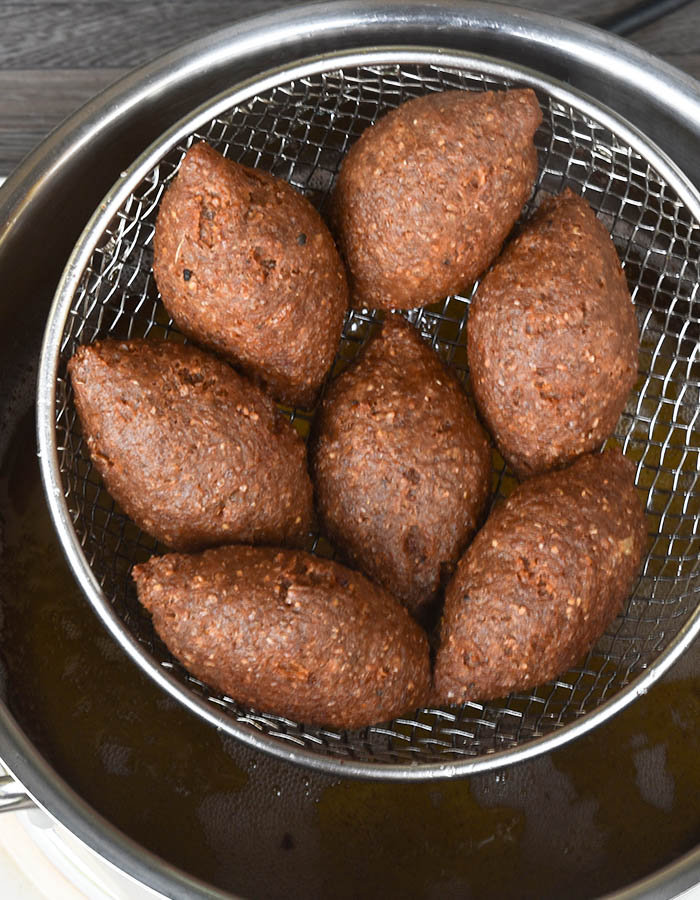
Our family recipe is authentic and luscious, and I kept it the way my granny and mom made it.
I come from a family of confident cooks who stretch out wonderful feasts that are such a chore to make and fried kibbeh balls are something that really ties me to those memorable days of my granny, mom and aunties, gathering a round the kitchen table, crafting kibbeh in huge batches, as a child I took for granted their incredible ability, but years later after I got married and had a kitchen for myself, I knew the value of these sacred recipes, and had to learn them by all means, including kibbeh balls. Eventually, I have been making the recipe for more than 30 years and earned a reputation for being a great kibbeh maker and here I am to unlock all of the secrets of our family recipe. Preserving my kibbeh family recipe is just like saving part of my history and keep it forever for the future generations. Our family recipe is so authentic and succulent. If you’ve never made kibbeh before, you’ll be delighted by the result. Watch the detailed video tutorial below.
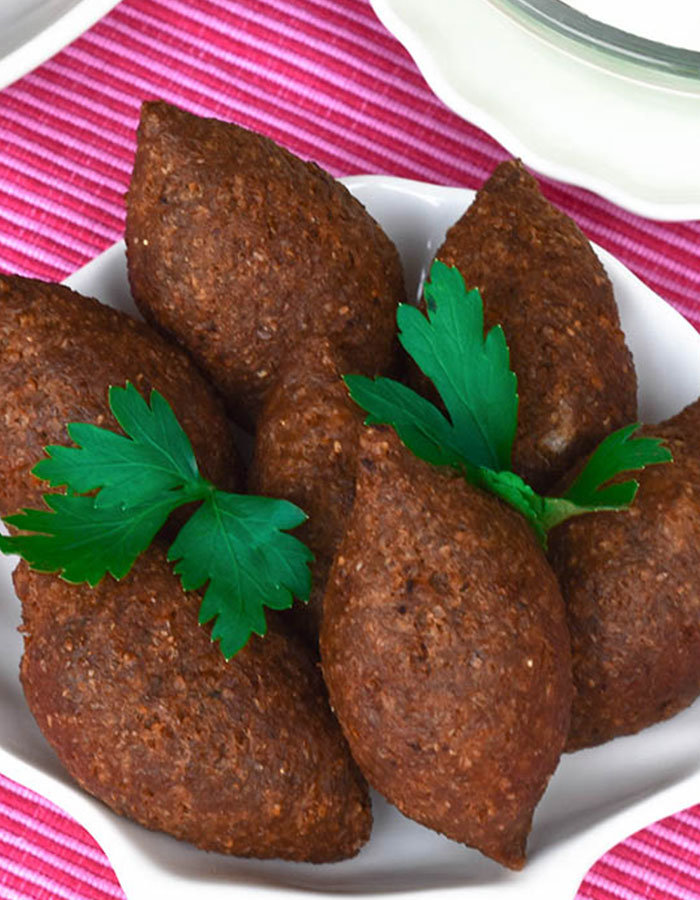

Serve it as an appetizer or part of the mezze spread, but I would happily enjoy it with some plain yogurt or yogurt and cucumber salad as a satisfying lunch or dinner. Nothing equatesto fried kibbeh balls pipping hot from a fryer.
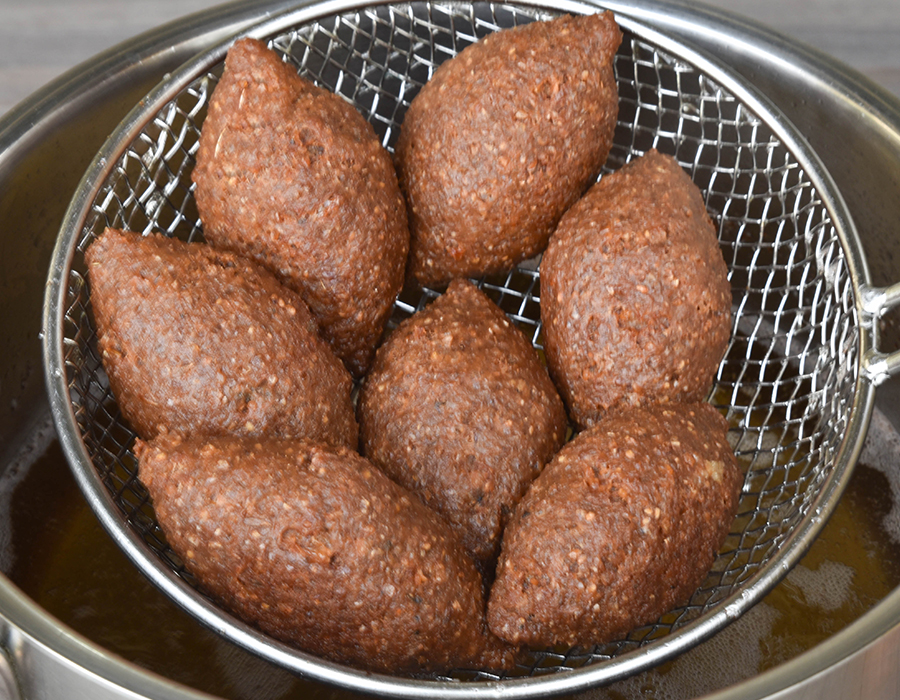
Or serve it with a decent bowl of hummus. Fried kibbeh balls and hummus are a match made in food heaven.

Making kibbeh balls passes through 5 phases:
- Phase 1: Prepare the flavor enhancer which we call kamouneh. This will deepen the flavor notes of the kibbeh.
- Phase 2: Prepare the bulgur kibbeh dough (the outer shell of the kibbeh).
- Phase 3:Prepare the minced meat- onion stuffing.
- Phase four: Form the kibbeh.
- Phase 5: Freeze or fry the kibbeh.
To prepare the flavor enhancer:
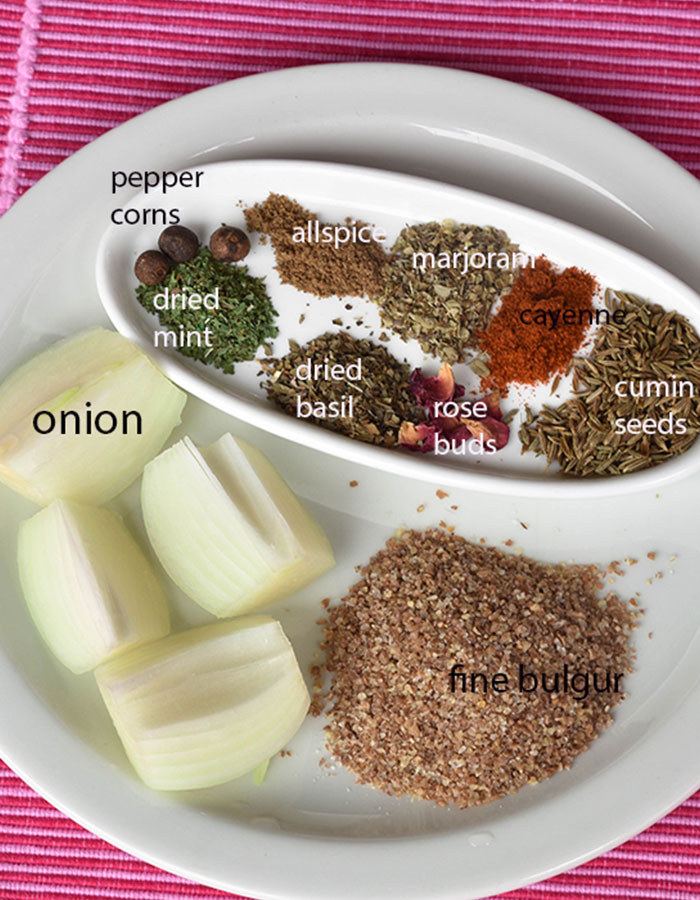
Start by making the flavor enhancer mix (kamouneh): In a bowl of food processor, add the cumin seeds, dried basil, dried marjoram, dried mint, pepper corns, allspice, edible rosebuds (if used), chili flakes (if used), bulgur and chopped onion. Pulse a few times and blend to end up with a mix of one texture. Set aside.

To prepare the bulgur kibbeh dough:
Using a sharp knife, cut the veal chunks into small cubes. Removing any fat and silver in the process. Place the meat in the freezer for 20 minutes, this will facilitate the grinding process. Using a food processor, grind the meat cubes to a paste like consistency. preferably in 2 batches or alternatively, ask the butcher to grind the meat in his electric grinding machine, and then later you grind it using your food processor, this would be way more easy for you. Refrigerate.
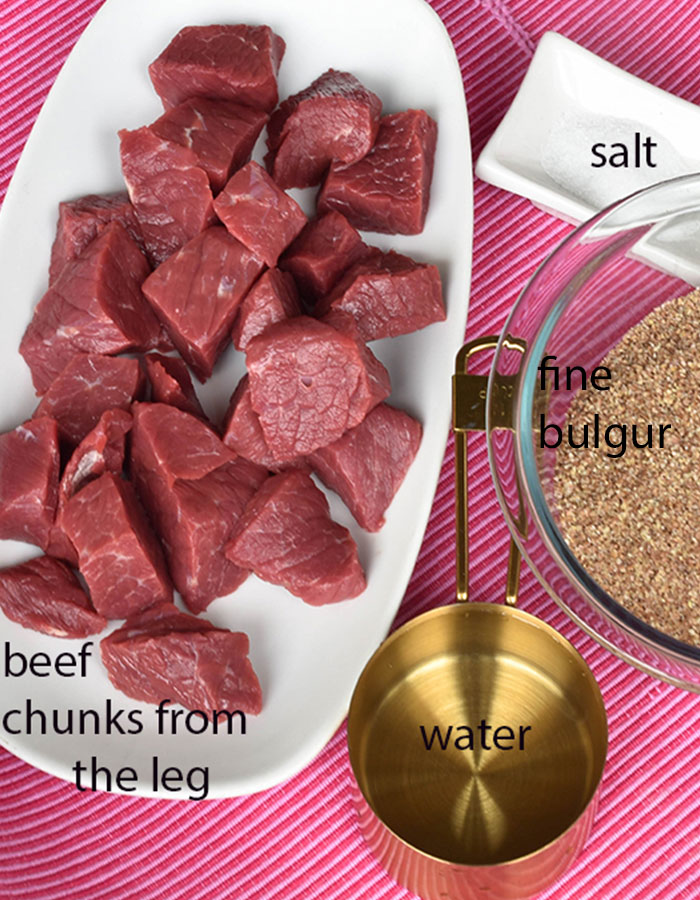
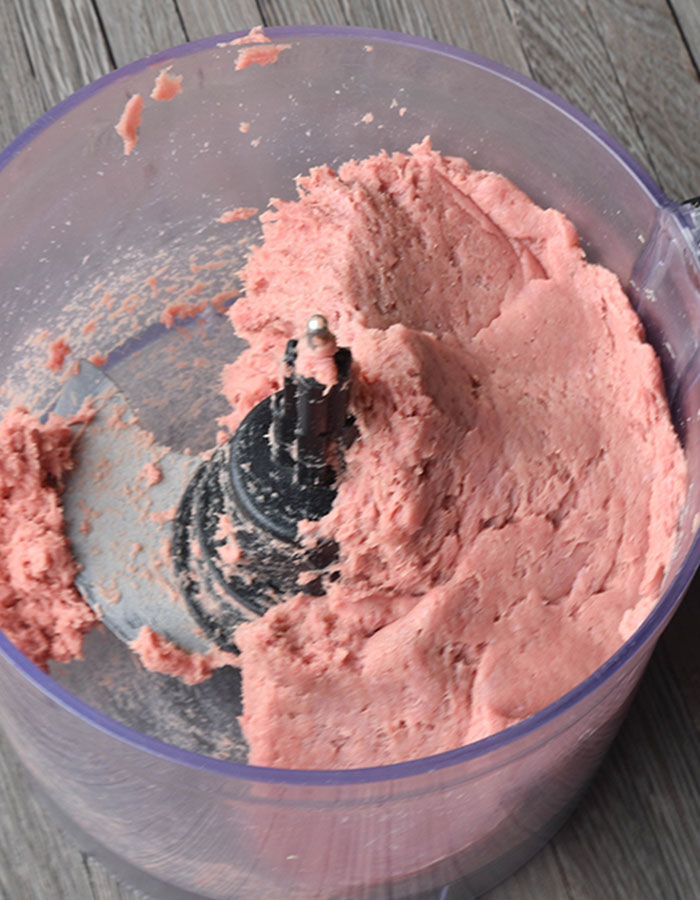
Put the 2 1/2 cups of bulgur in a large heatproof dish and pour 1 1/4 cups of boiling water. Give a quick stir and set aside for a minimum of 30 minutes, allowing the bulgur to hydrate and considerably swell. This is an important step. Add the flavor enhancer (kamouneh) you prepared to the hydrated bulgur and mix to infuse everything together.
After 40 minutes knead the bulgur while gradually adding the iced water. Knead with your hands for 20 minutes, the more you knead, the better the result is,I don’t knead the bulgur with a food processor, I use my hands, just like my granny and mama did, more tedious, as it takes about 20 minutes of kneading, but believe me this will yield way more crispy kibbeh balls, take my words for it. But if you are short of time, you can still grind the bulgur in a food processor. But the result, in terms of crispness would not be the same. The vigorous action of a food processor, will yield a different texture (watch the video tutorial to learn the technique of kneading). You will notice at this stage the bulgur has softened. Remove the meat from the refrigerator and add it to the bulgur, knead well until the mixture is fully integrated and the dough is soft and comes together in a cohesive ball. Add salt, and you may need to add a bit of more iced water, depending on the consistency of the mixture, watch the video tutorial to see the solidity.
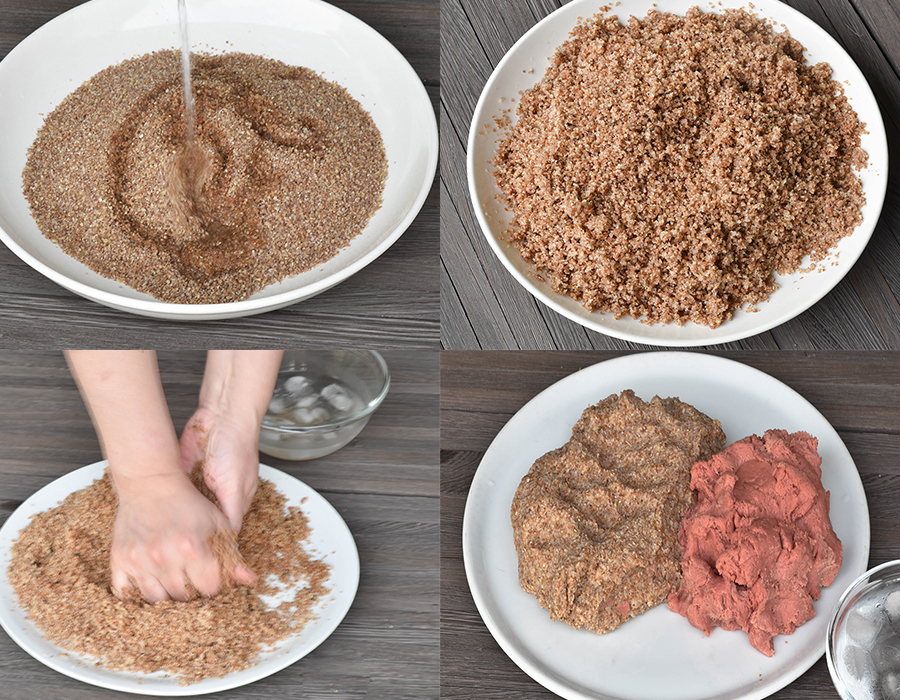
Now your kibbeh dough is ready. Refrigerate.

To prepare the stuffing:
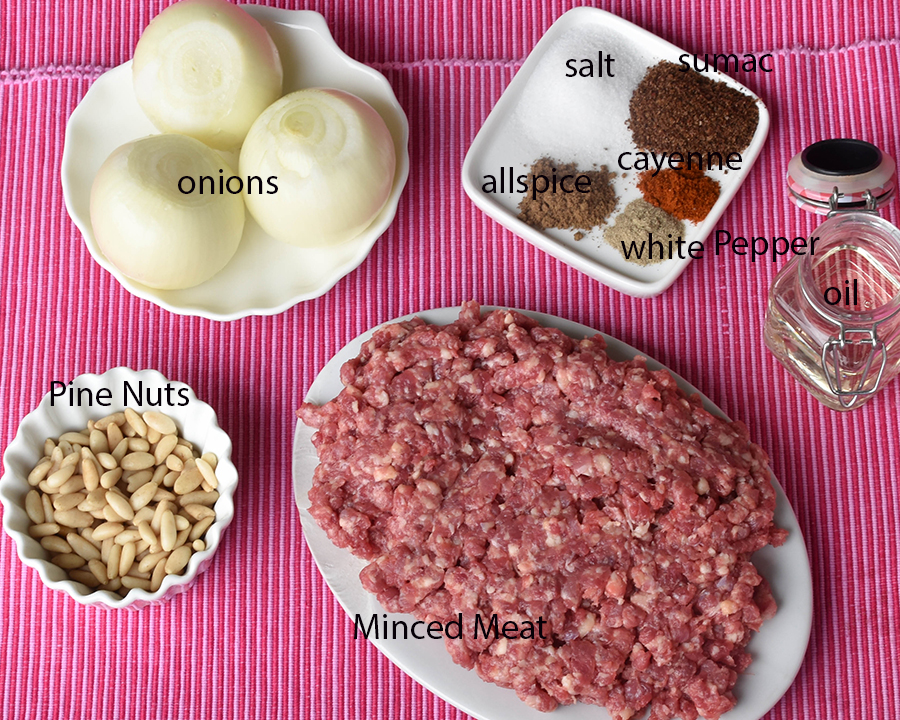
Prepare the stuffing: Add 1/4 cup of oil to a skillet and place over medium heat. Saute the pine nuts to a golden in color. Remove with a slotted spoon and drain on paper towels and set aside. Using the same oil saute the minced meat and cook over medium-high heat about 7 to 10 minutes until the meat is browned and no pink color remains. Add the onions and cook for an additional 5 to 7 minutes over medium heat, allowing the onions to wilt. Add the salt, sumac, allspice, white pepper and cayenne if used, and toss in the toasted pine nuts, mix well and taste as you go, and set aside to completely cool down.

To put the kibbeh together:
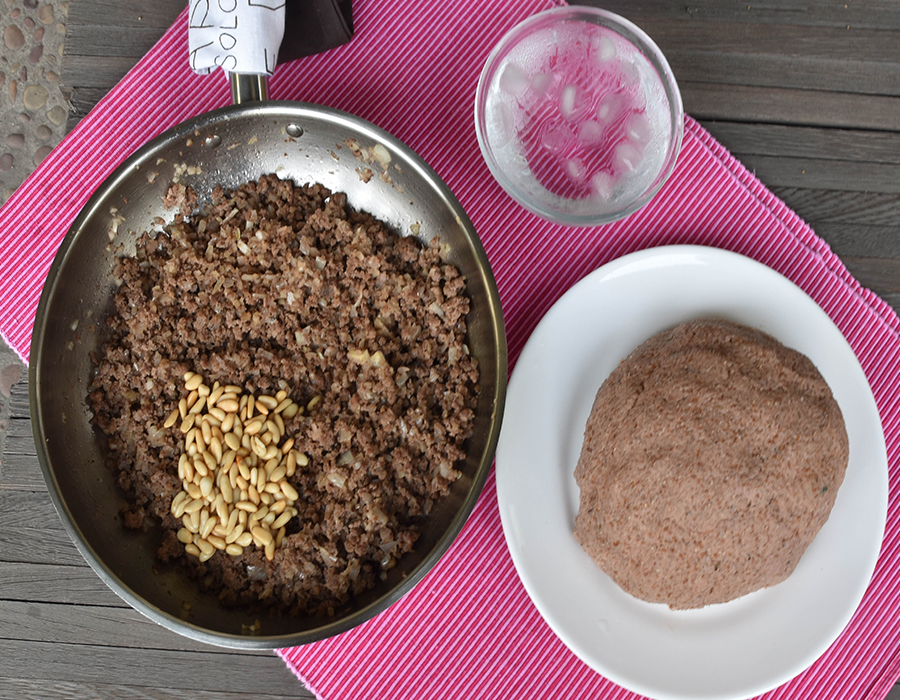
Dampen your hands with some iced water and grab a handful of the raw kibbeh (the size of an egg). Working with one portion at a time, dig in your finger to make a hole, and work around the hole by pressing your finger to create a thin wall. The wall should be to a thickness of 1/2 cm if you manage making that. (watch the video tutorial).

Place 1 teaspoon of the stuffing. Seal and shape the dough into an oval, add a touch of cold water if needed to keep it smooth with no pokes or openings.
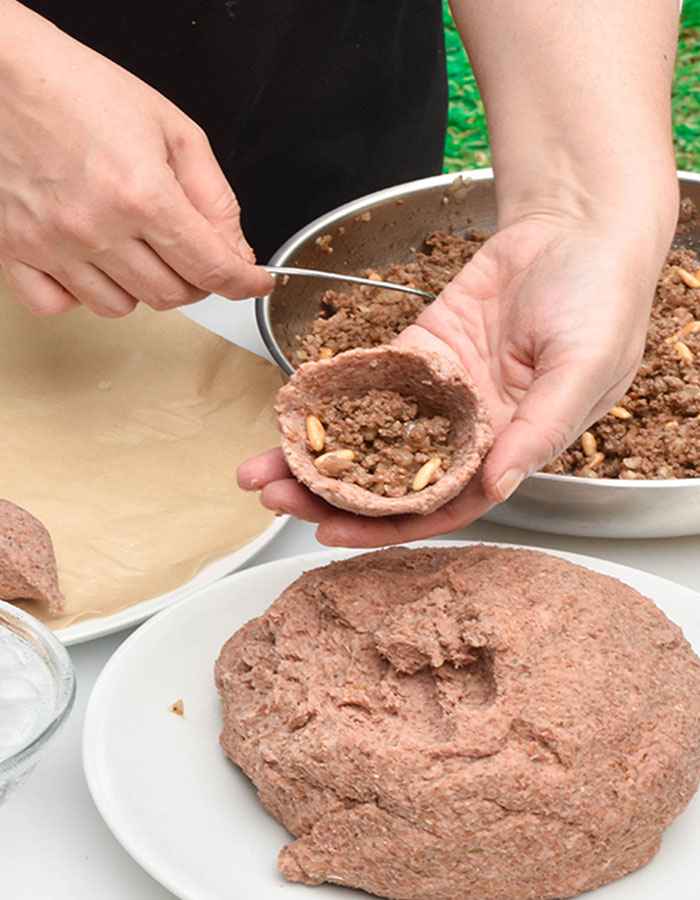
Set the kibbeh balls on a tray as you make them.
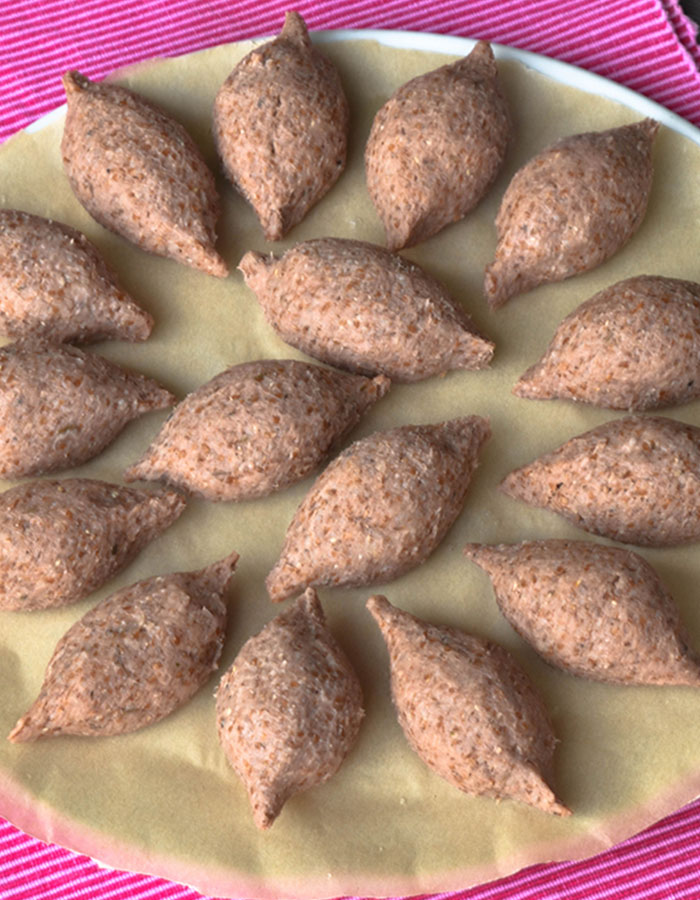
Heat oil to an adequate frying temperature (170°C/ 340 °F) and deep fry the kibbeh in batches (don’t crowd the frying pan to avoid a mushy kibbeh), until it is browned from all sides. Drain on paper towels and serve warm. They hold in the refrigerator for 5 days.
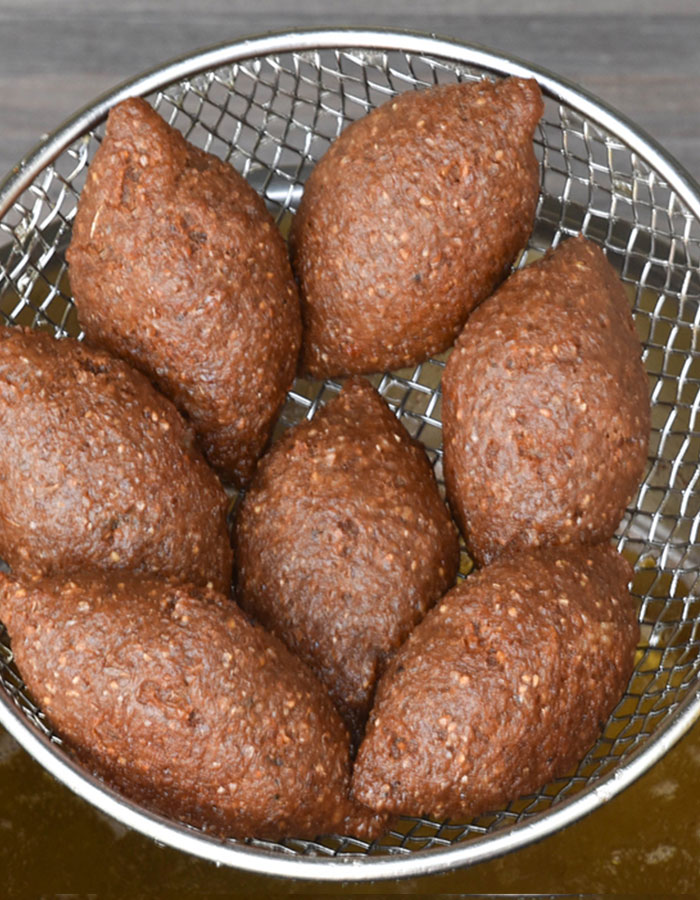
Tips to consider
- Kibbeh balls are great for parites and entertainment, the good news is that they freeze well in their raw stage, you can double and triple the recipe.
- Learn making kibbeh balls as they are a foundation to other kibbeh recipes, that I will be sharing with you in the near future.
- Shaping the kibbeh balls is an art that can be perfected by practice. If you’ve seen anyone making kibbeh, you know that the trickiest part can be getting the kibbeh balls to stay intact with no cracks as you shape them after you seal them, if for any reason the kibbeh cracked, add a touch of cold water with you finger and smooth it to connect the surface and seal the crack.
- In making the kibbeh dough, I highly recommended to use veal or beef chunks (usually from the leg) with 5 percent fat. Most people think that it should be zero fat, but believe me the 5 percent fat would prevent you the kibbeh balls from getting gummy rather than crispy, make sure you remove any silver in the process.
- It is advisable to use fatty lamb or beef meat for the filling, for a more juicy flavor.
- Adding a lot of onions in the filling, yields a moist interior.
- Fine bulgur, often labeled #1, can be found at Middle Eastern markets, as well as online, and please don’t use the coarse bulgur, it won’t work here.
- Hydrating the bulgur with boiling water will yield way more crispy kibbeh balls (granny’s tip)
- I don’t knead the bulgur with a food processor, I use my hands, just like my granny and mama did, more tedious, as it takes about 20 minutes of kneading, but believe me this will yield way more crispy kibbeh balls, take my words for it. But if you are short of time, you can still grind the bulgur in a food processor, but the result, in terms of crispness would not be the same.
- Wet your hands with ice water when moulding the balls, this will help you shap the kibbeh balls easier.
- They freeze nicely, so you might want to double or triple the ingredients.
Hungry for more bite sized appetizers?
- Vegetarian stuffed grape leaves
- Sfeeha
- Lebanese Meat Fatyer
- Lebanese meat rolls
- Cheese sambousek
- Baked kibbeh cups with muhammara
- Zaatar and sumac crackers
- Fried Potato kibbeh balls
While making kibbeh balls is a starightforward process, it does require much attention to the technique. Honor the ingredients and let them shine, you will be delighted by the result. The best way to learn making kibbeh is visually, watch the detailed video tutorial.
Lebanese Fried Kibbeh Balls/ kibbeh Akras
Description
Equipment
- Food Processor
Ingredients
- Kibbeh Shell:
- 500 grams / 1lb 2 oz veal chunks usually from the leg with zero percent fat
- 2 1/2 cups fine bulgur
- 1 teaspoon salt or to your preference
- 1 cup boiling water
- Flavor enhancer mix we call it kamouneh to be added to the kibbeh dough
- 1 onion finely chopped
- 1 tablespoon cumin seeds
- 1 teaspoon dried basil
- 1 teaspoon dried marjarom
- 1/4 teaspoon dried mint
- 4 tablespoons fine bulgur
- 4 black pepper corns
- 1/2 teaspoon of allspice
- 4 dried edible rosebuds optional
- chili flakes optional
- Filling ingredients hashweh:
- 500 grams/ 1 lb 2 oz minced veal or lamb
- 3 large onions finely chopped
- 1 teaspoon salt or to taste
- 1 teaspoon allspice
- 1 tablespoon sumac
- 1/2 teaspoon white pepper
- A dash of cayenne pepper optional
- 1/3 cup pine nuts or roughly chopped walnuts
- 1/4 cup sunflower oil or ghee
- sunflower oil or any neutral oil for deep frying
Instructions
To make the kibbeh Dough:
- Start by making the flavor enhancer mix (kamouneh): In a bowl of food proccesor add the cumin seeds, dried basil, dried marjarom, dried mint, pepper corns, allspice, edible rosebuds (if used), chili flakes (if used), bulgur and chopped onion. Pulse a few times and blend to end up with a mix of one texture.
- Using a sharp knife, cut the veal chunks into small cubes. Removing any fat and silver in the process. Place the meat in the freezer for 20 minutes, this will facilitate the grinding process. Using a food processor, grind the meat cubes to a paste like consistency. preferably in 2 batches or alternatively ask the butcher to grind the meat in his electric grinding machine, and then later you grind it using your food processor, this would be way more easy for you. Refrigerate.
- Put the 2 1/2 cups of bulgur in a large heatproof dish and pour 1 cup of boiling water. Give a quick stir and set aside for a minimum of 30 minutes, allowing the bulgur to hydrate and considerably swell. This is an important step.
- After 30 minutes knead the bulgur while gradually adding 1 cup of iced water. Knead with your hands for 15 minutes, the more you knead it, the better it will become. (watch the video tutorial to learn the technique of kneading). You will notice at this stage the bulgur has softened. Remove the meat from the refrigerator and add it to the bulgur, knead well until the mixture is fully integrated and the dough is soft and comes together in a cohesive ball. Add salt, and you may need to add a bit of more iced water, depending on the consistency of the mixture, watch the video tutorial to see the solidity. Now your kibbeh dough is ready. Refrigerate.
To make the filling (hashweh):
- Add 1/4 cup of oil to a skillet and place over medium heat. Saute the pine nuts until it turns golden in color. Drain on paper towels and set aside.
- Using the same oil saute the minced meat and cook over medium-high heat about seven to 10 minutes until the meat is browned and the juices have evaporated.
- Add the onions and cook for an additional 5 to 7 minutes over medium heat. Add the salt, sumac, allspice, white pepper and cayenne if used. Add the toasted pine nuts, mix well and set aside to completely cool down.
To put together:
- Dampen your hands with some ice water and grab a handful of the raw kibbeh (the size of an egg).
- Working with one portion at a time, dig in you finger to make a hole, and work around the hole by pressing your finger to create a thin wall. The wall should be to a thickness of 2mm on all sides (watch the video tutorial) and place 1 heaped teaspoon of the stuffing. Seal and shape the dough into an oval, add a touch of cold water if needed to keep it smooth with no pokes or openings. Set the kibbeh balls on a tray as you make them.
- Heat oil to an adequate frying temperature (170°C/ 340 °F), (there shouldbe enough oil to cover the kibbeh while they’re frying) and deep fry the kibbeh in batches (don’t crowd the frying pan to avoid a mushy kibbeh), until it is browned from all sides. Drain on paper towels and serve warm or cold. They hold in the refrigerator for 5 days.
Video
Notes
To freeze the kibbeh balls, you have two ways:
- You can freeze the kibbeh balls in their raw stage: Line a sheet of parchment paper or wax paper on a freeze-proof tray. Line up the raw kibbeh balls on the parchment paper with some space between them, Leave them for 7 hours to solidofy, then store them in a freezer bag. They keep well in the freezer for 4 months.
- You can freeze the kibbeh after baking in the oven, leave them to cool down, line up the baked kibbeh balls on the parchment paper with some space between them, Leave them for 6 hours and check if they have solidified. If they are hard you can then store them in a freezer bag. They keep well in the freezer for months. Fry them whenever you need.
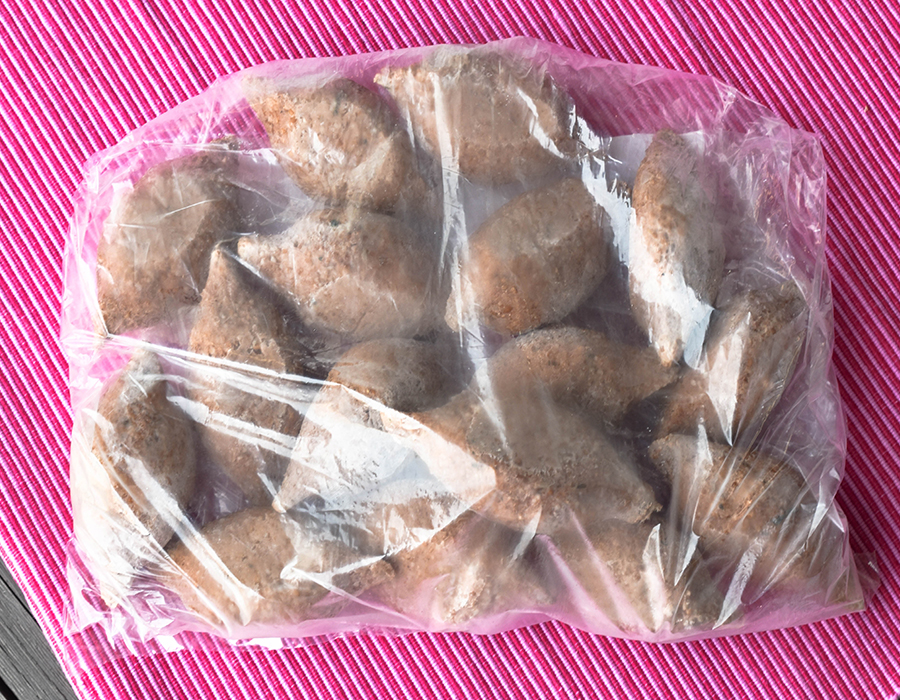 Freezing: I always have raw kibbeh in my freezer. I double and triple the quantity mentioned here, and I portion in groups like every four dozen together!
Freezing: I always have raw kibbeh in my freezer. I double and triple the quantity mentioned here, and I portion in groups like every four dozen together!
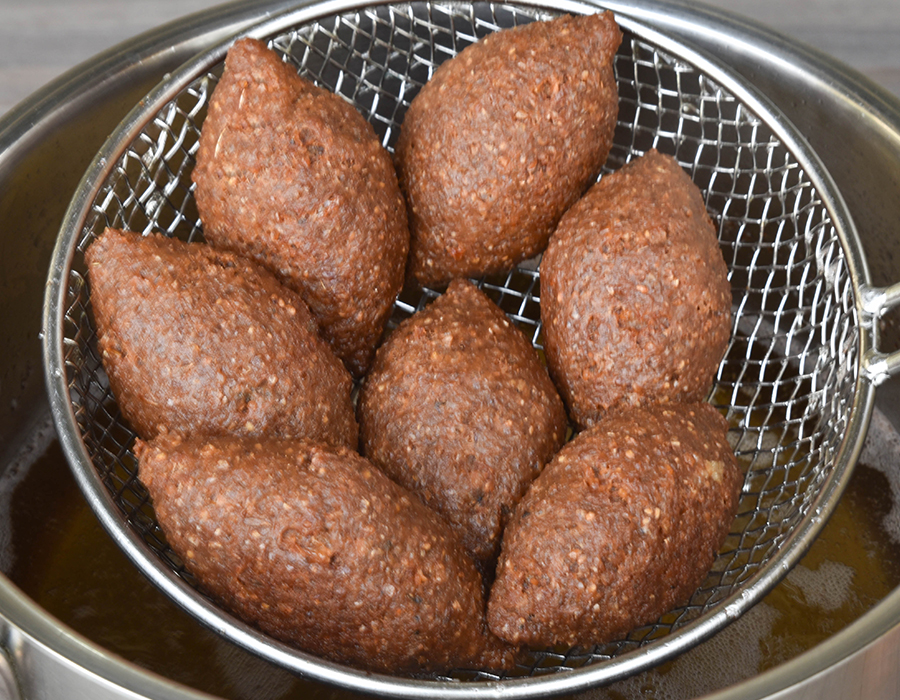


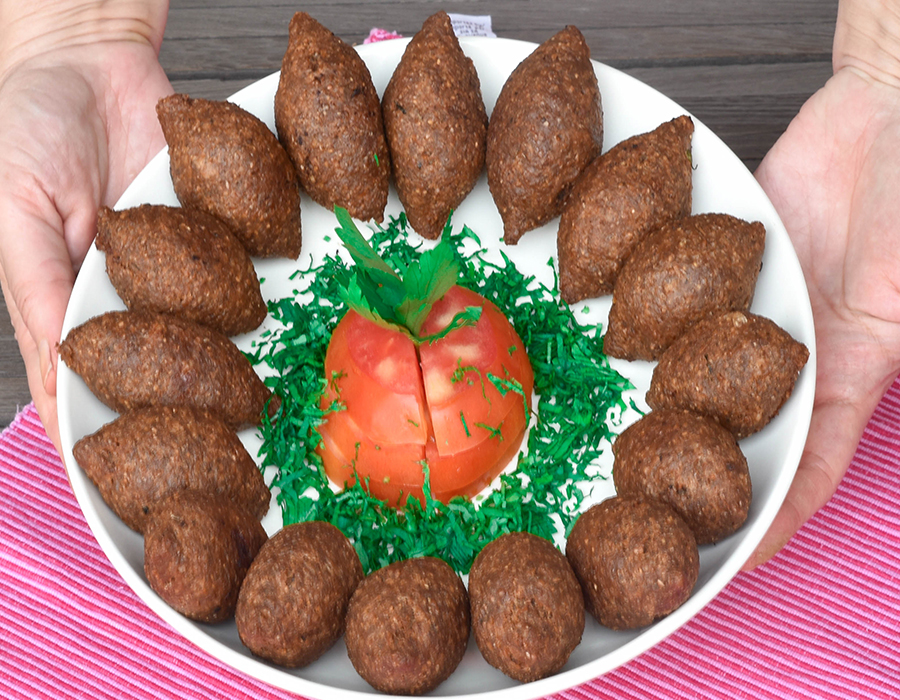
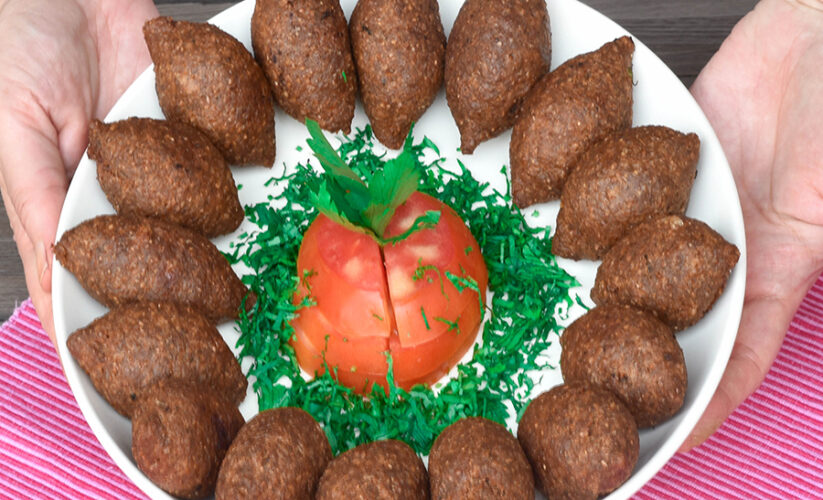

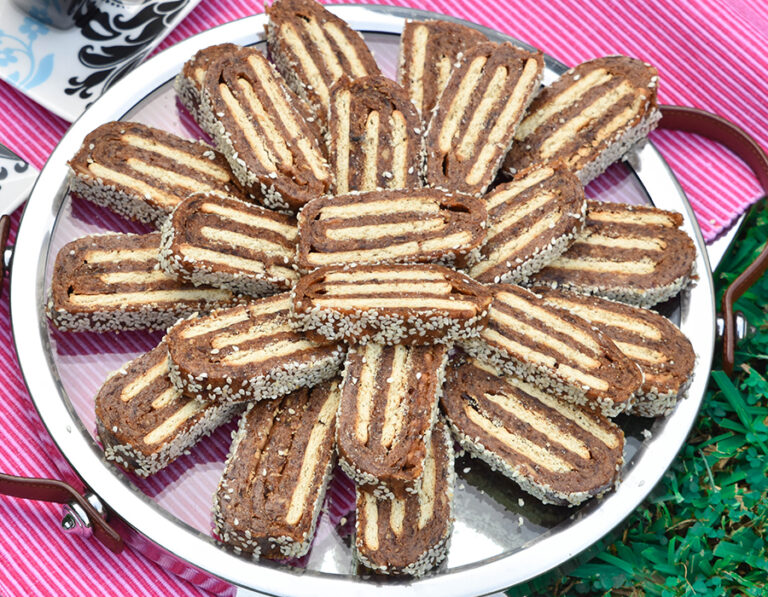

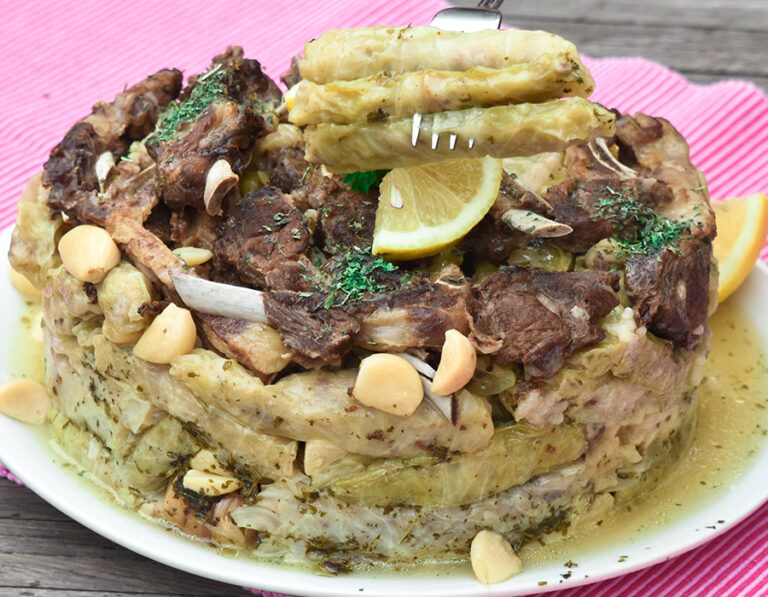

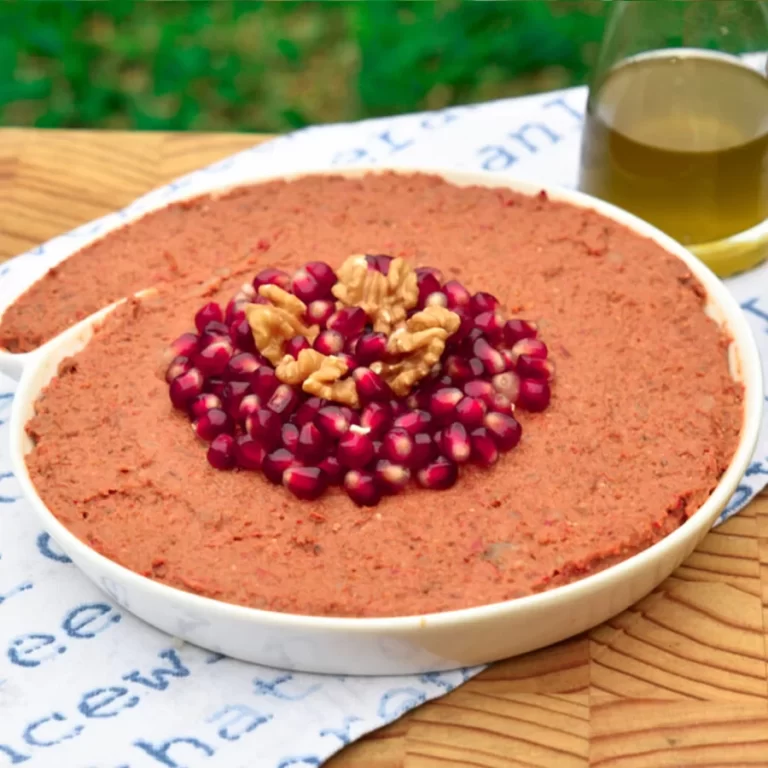
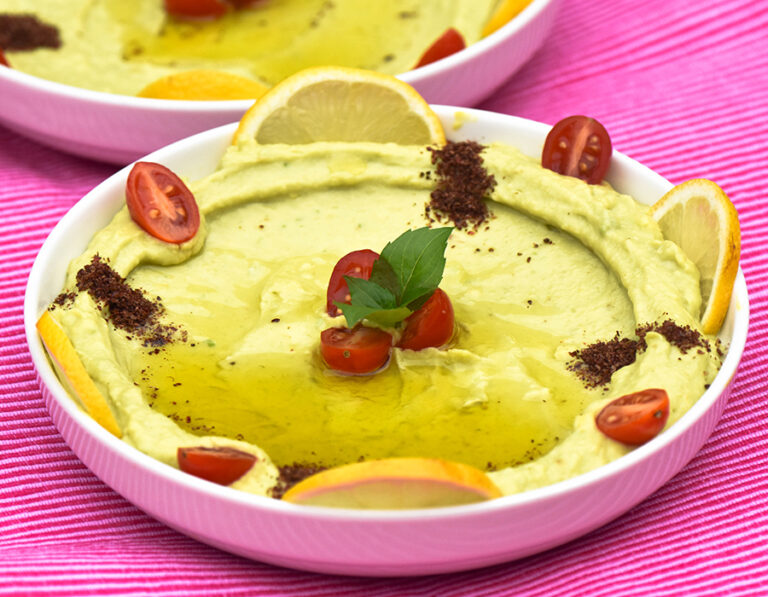
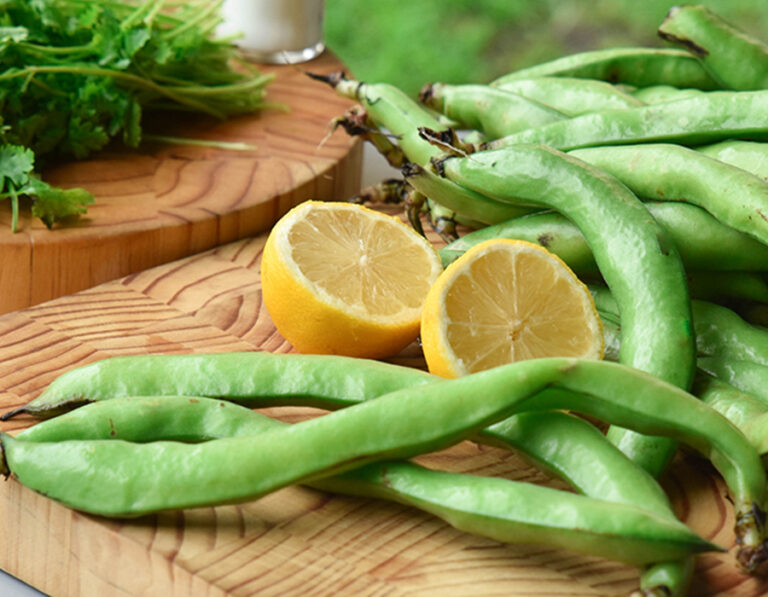
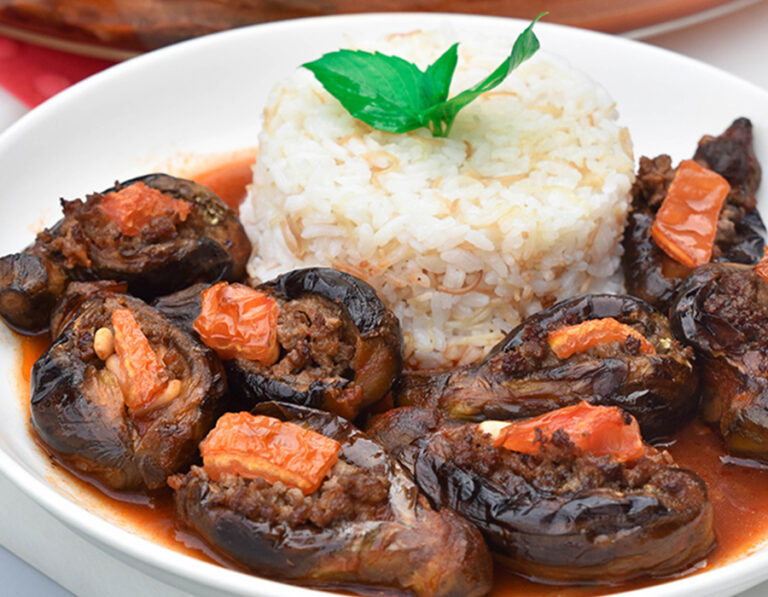



















2 Comments
I love all of the big flavors you’ve added to these tasty fried kibbeh balls. Your easy step by step instructions are perfect… and I loved your suggestion to plan ahead and make extra for the freezer. You’ve made this recipe so easy… and so delicious!